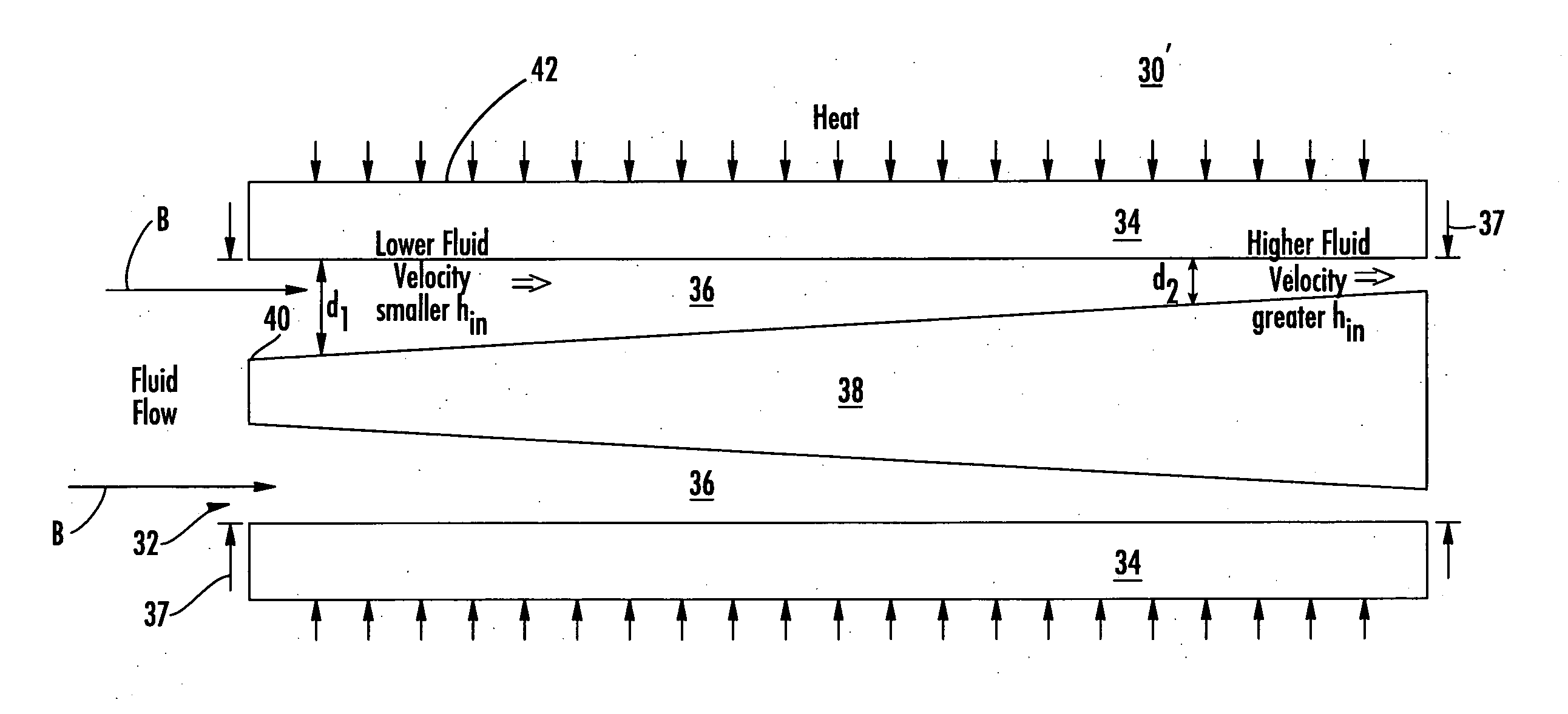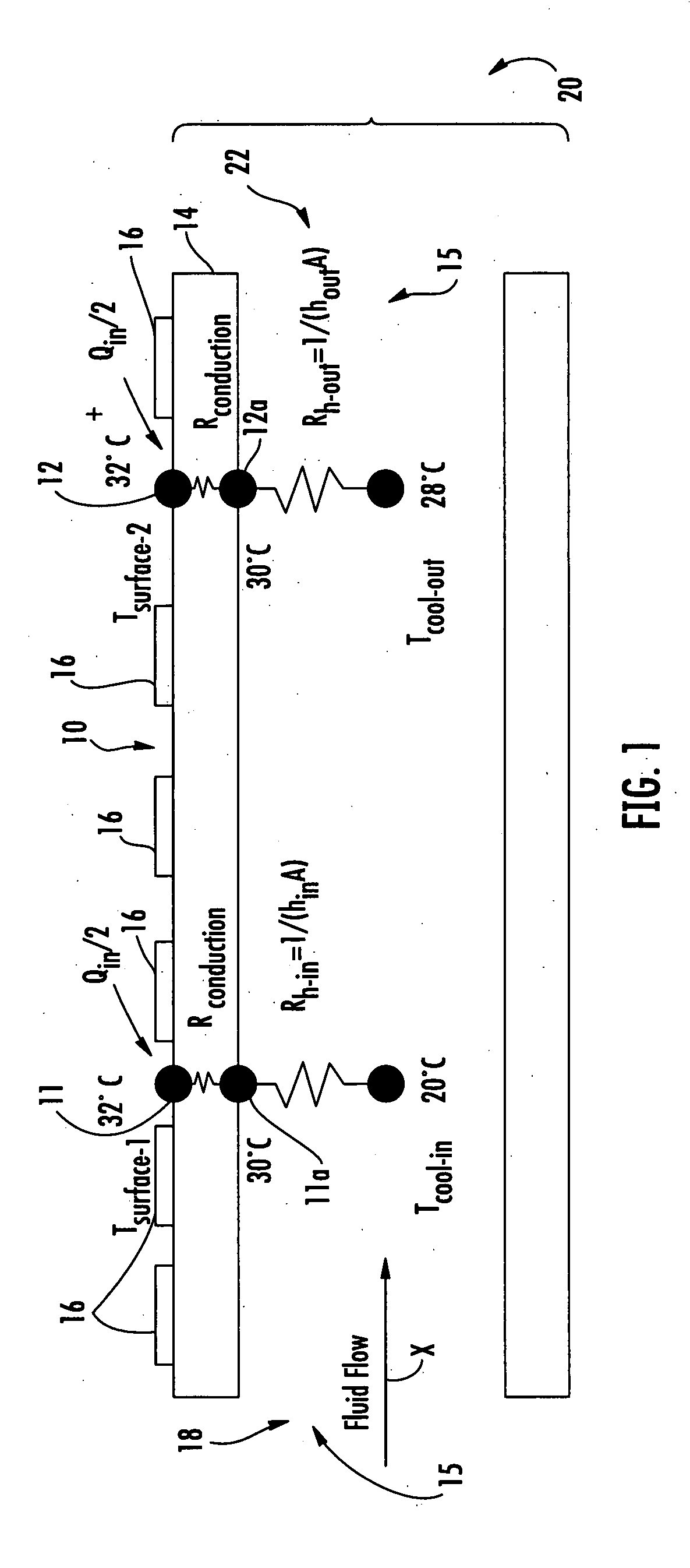Heat sink and method of making same
a heat sink and heat sink technology, applied in lighting and heating apparatus, cooling/ventilation/heating modification, electrical equipment, etc., can solve the problems of undesirable thermal gradient generation, reducing the conductivity of the cooled edges reducing the conductivity of the cooled edge of the cold plate, etc., to achieve less complex, less expensive, and low risk
- Summary
- Abstract
- Description
- Claims
- Application Information
AI Technical Summary
Benefits of technology
Problems solved by technology
Method used
Image
Examples
Embodiment Construction
[0047]Aside from the preferred embodiment or embodiments disclosed below, this invention is capable of other embodiments and of being practiced or being carried out in various ways. Thus, it is to be understood that the invention is not limited in its application to the details of construction and the arrangements of components set forth in the following description or illustrated in the drawings. If only one embodiment is described herein, the claims hereof are not to be limited to that embodiment. Moreover, the claims hereof are not to be read restrictively unless there is clear and convincing evidence manifesting a certain exclusion, restriction, or disclaimer.
[0048]As discussed in the Background section above, thermal gradients occur in fluid cooled heat sinks because, as the fluid travels through the heat sink, it picks up heat from the heat sources. Consequently, the coolant further downstream is at a higher temperature. This condition is shown schematically in FIG. 1. In this...
PUM
 Login to View More
Login to View More Abstract
Description
Claims
Application Information
 Login to View More
Login to View More - R&D
- Intellectual Property
- Life Sciences
- Materials
- Tech Scout
- Unparalleled Data Quality
- Higher Quality Content
- 60% Fewer Hallucinations
Browse by: Latest US Patents, China's latest patents, Technical Efficacy Thesaurus, Application Domain, Technology Topic, Popular Technical Reports.
© 2025 PatSnap. All rights reserved.Legal|Privacy policy|Modern Slavery Act Transparency Statement|Sitemap|About US| Contact US: help@patsnap.com



